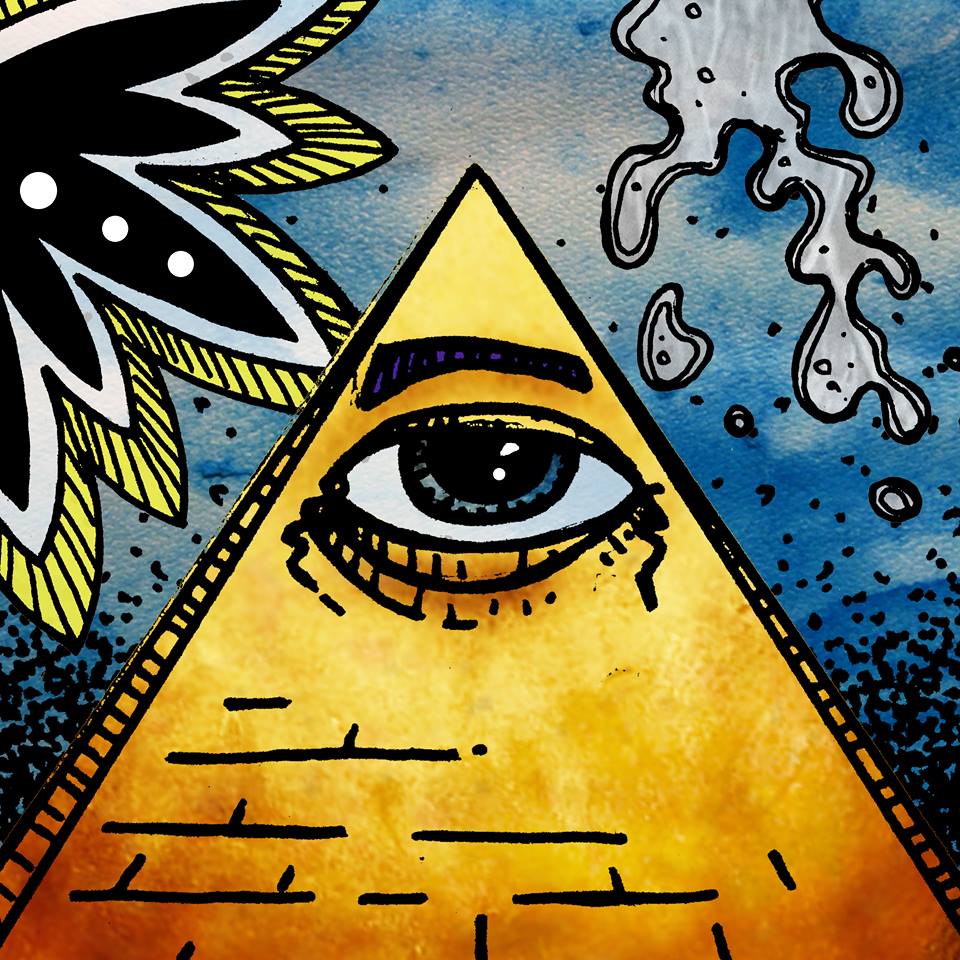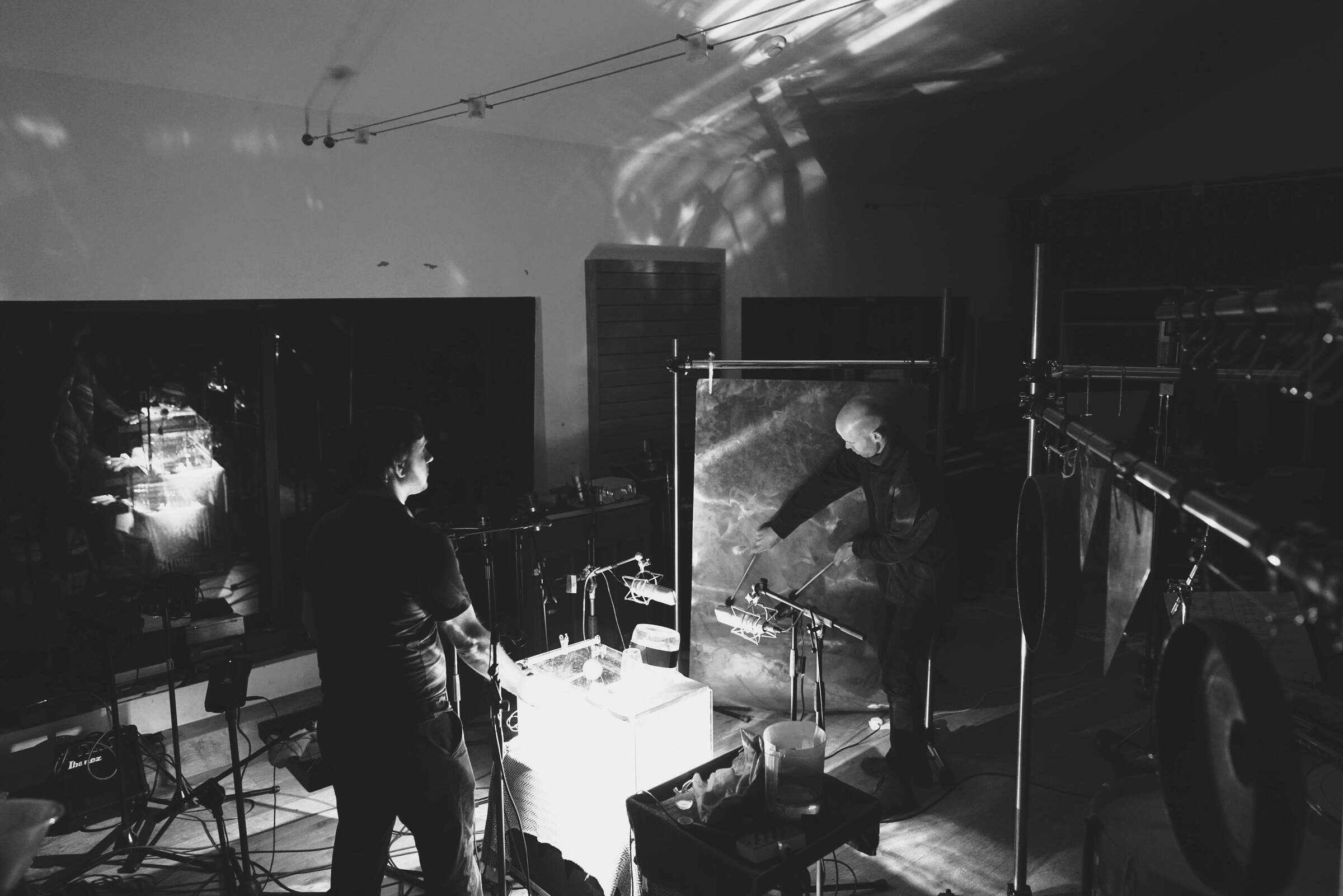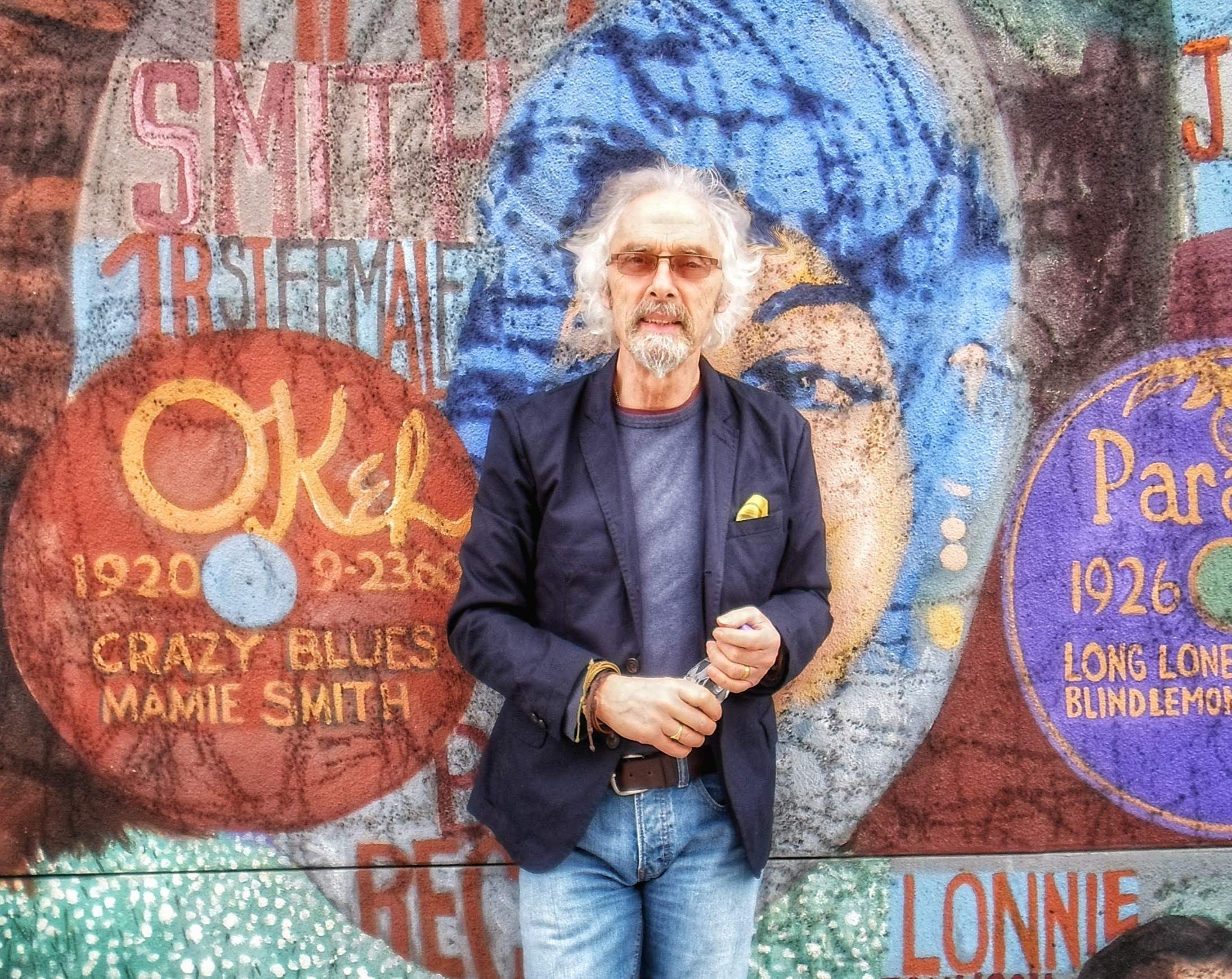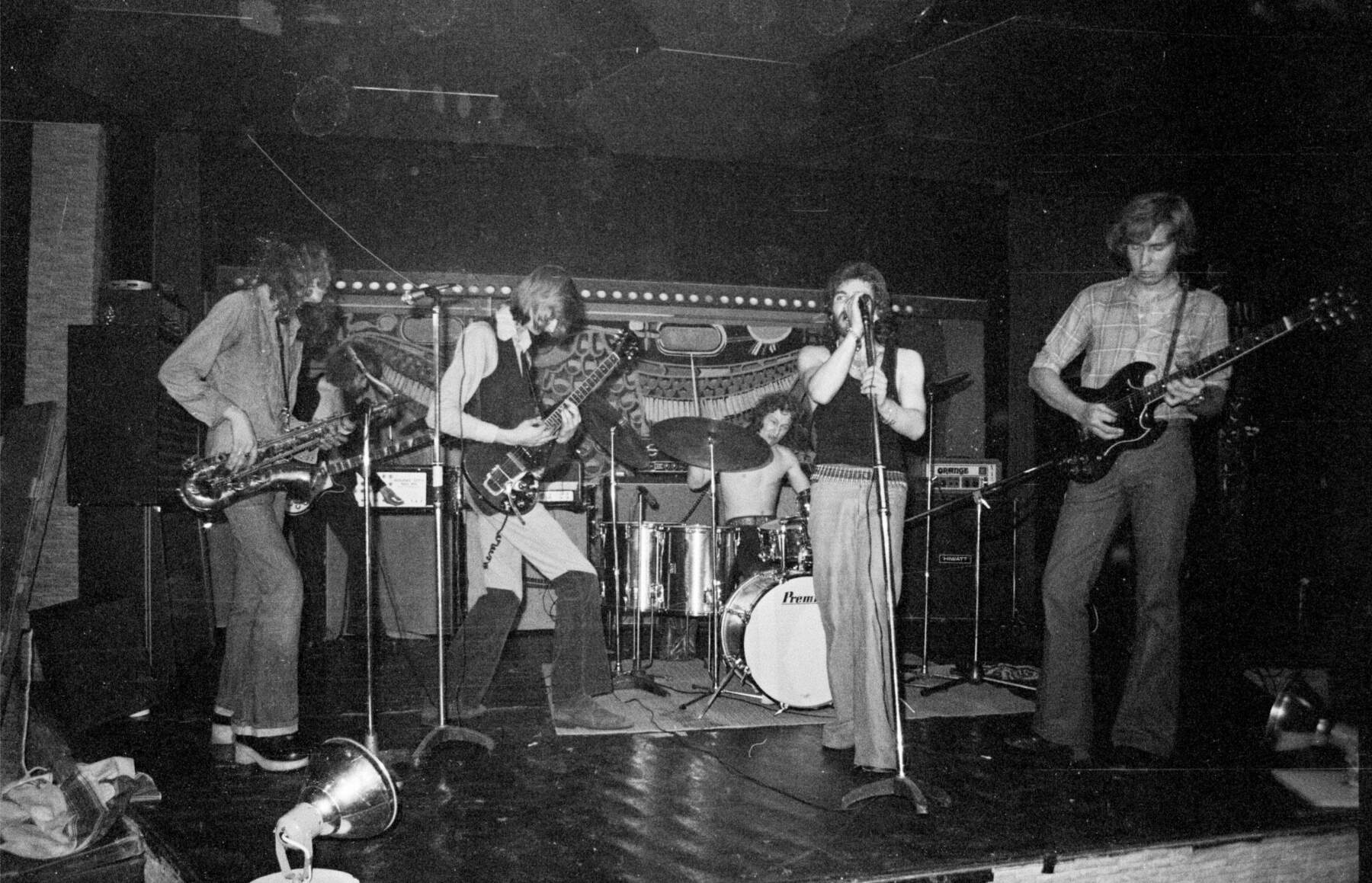Inside Archetypes: Nathan Sherman and Alex Petcu on Sound, Symbol, and Collaboration
‘Archetypes’ is the daring new album from Ireland-based duo Nathan Sherman (viola) and Alex Petcu (percussion), released on CD and digital via Diatribe Records.
The album features commissioned works by five extraordinary composers, including Nick Roth, Ann Cleare, Benjamin Dwyer, Siobhán Cleary, and Nathan Sherman himself, blending instrumental virtuosity with post-industrial textures and modern composition.
Recorded without overdubs, Sherman and Petcu relied on carefully placed microphones to capture every subtle, peripheral sound. The result is an immersive listening experience rich in micro-detail, spatial depth, and nuance, where each interaction between viola and percussion adds a new dimension to their instruments’ vocabulary.
The five tracks traverse a vast musical landscape, recalling influences from Stockhausen and Varèse to Einstürzende Neubauten, Sunn O))), and avant-metal innovators. ‘Sophia x Bythos’ amplifies the symbolic power of water, gravity dreams iv merges industrial percussion with soaring viola, ‘Laganton’ incorporates a historic shark-calling recording, ‘Scheherazade’ channels the Trickster archetype, and ‘Sherman’s Cauldron of Morning’ captures Sylvia Plath’s ecstatic intensity through drone and distortion.
For all its intellectual depth, ‘Archetypes’ remains exhilarating and joyous. It is a record that challenges, transports, and delights, inviting listeners to explore new sonic dimensions while celebrating the playful, adventurous spirit of Sherman and Petcu’s duo.
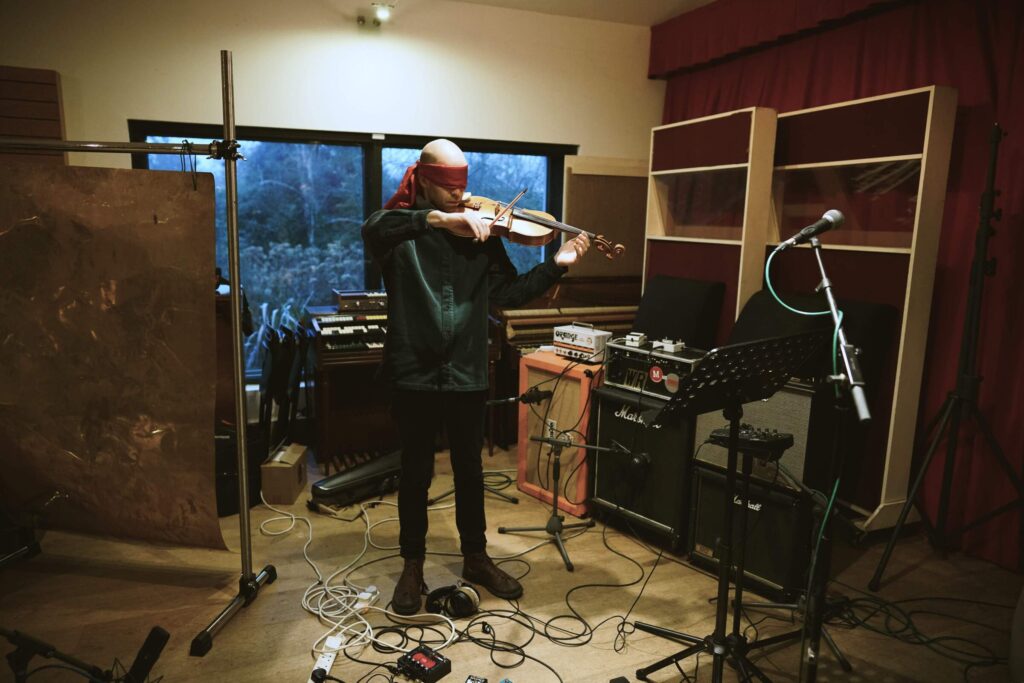
“Everything is symbolic.”
The album draws on Carl Jung’s Memories, Dreams, Reflections and his work on archetypes. Nathan, you’ve said you read the book and were fascinated by his ideas about archetypes in art and folklore. What was it about Jung’s thinking that really stuck with you and made you want to start this collaboration?
Nathan Sherman: What really draws me to Jung’s life and work is his ability to observe how everything produced by man is a reflection on a collective psyche. Everything is symbolic. Religion, folklore, visual art, traditions all stem from primal instincts, which he called archetypes. Through his study of the archetypes, he noticed quite distinct characters with certain traits, such as the trickster, mother, and shadow. This was the launching point for this project: to get five composers to create unique sound worlds based on their own reflections on archetypal motifs.
The album blends post-industrial soundscapes with modern composition, bringing to mind everyone from Stockhausen and Varèse to Einstürzende Neubauten and Sunn O))). How did you go about turning those complex, symbolic Jungian ideas into such a rich and textured sound that crosses so many musical boundaries?
Nathan: When considering the composers for this project, we agreed that the composers needed to have an individual sound but also complement each other. The album needed to be as sonically dynamic as the subject material it reflects. The trouble was narrowing it down, and the curation could have gone in many different directions, but I think we got it right. When we collaborated with each composer, everyone realized the incredibly broad scope and possibility, and nobody was reserved in using the duo to the fullest extent.
The first track, ‘Sophia x Bythos,’ is such a unique piece. Nick Roth wrote it for amplified viola, aquarium, and light, and he has a history of amplifying the sound of water. Since water here symbolizes the unconscious, what was it like recording this track and capturing that “drama suddenly heightened by a heavy metal like application of viola”?
Nathan: This was a question we asked ourselves from the beginning. In the live version, it is quite a theatrical piece, with myself being blindfolded, representing the unconscious, and lights reflecting the water around the space. Fortunately, the sound element is so immersive that it easily stands alone. The water is amplified by a hydrophone and by contact microphones attached to the corners of the aquarium. Some of the theatrical parts required a small change to the score; for instance, when the aquarium lights come on, as the piece starts in total darkness, Nick decided to use struck crotales which were dipped into the water, creating a bright yet haunting and slightly unsettling sound. I plugged my viola into three large amps to create a bombastic sound, which represents God, but also ethereal sounds representing demons and other archetypal elements.
Ann Cleare’s ‘Gravity Dreams IV’ imagines the viola and percussion as parts of the same aerial body, but with the wings split apart. The viola floats high like a swallow, while the percussion has that industrial abstraction reminiscent of Varèse’s Déserts. How did you work together to bring those two very different but connected parts to life?
Nathan: Fortunately, Ann’s musical score is so detailed and rich that her intention as to the blend of both instruments was quite clear from the outset. The piece is incredibly complex, using unique combinations of sound and extended techniques from both players. As a viola player who also played percussion for several years in college, it was a particular joy to be used as a second percussionist. The idea of the shadow archetype is that a part of ourselves which we are unaware of strives for a unification with consciousness. The main objective in this piece was trying to make the viola and percussion blend as one while keeping distinct characteristics.
Benjamin Dwyer’s ‘Laganton’ is built around a recording of the last person in a lineage to practice shark calling. There’s a dialogue between sweeping viola and bell-like percussion before the voice appears, recorded more than 50 years ago. How did it feel to weave such a historic and personal element into the music?
Nathan: This piece is striking in its sound and incredibly emotional to perform. A family tradition, carried on for centuries, comes to an end. Laganton’s son, who would have carried on the tradition of shark calling, decided on an alternate future for himself. The idea that something so incredibly ingrained in a family’s psyche can come to an end is incredibly thought-provoking. The music incorporates elements of the melodic patterns of shark calling, the incantation, in a somewhat primitive playing style: direct, bold, guttural. It culminates in an eerie explosion of sound which incorporates a recording of Laganton’s voice, a true, touching moment on the album.
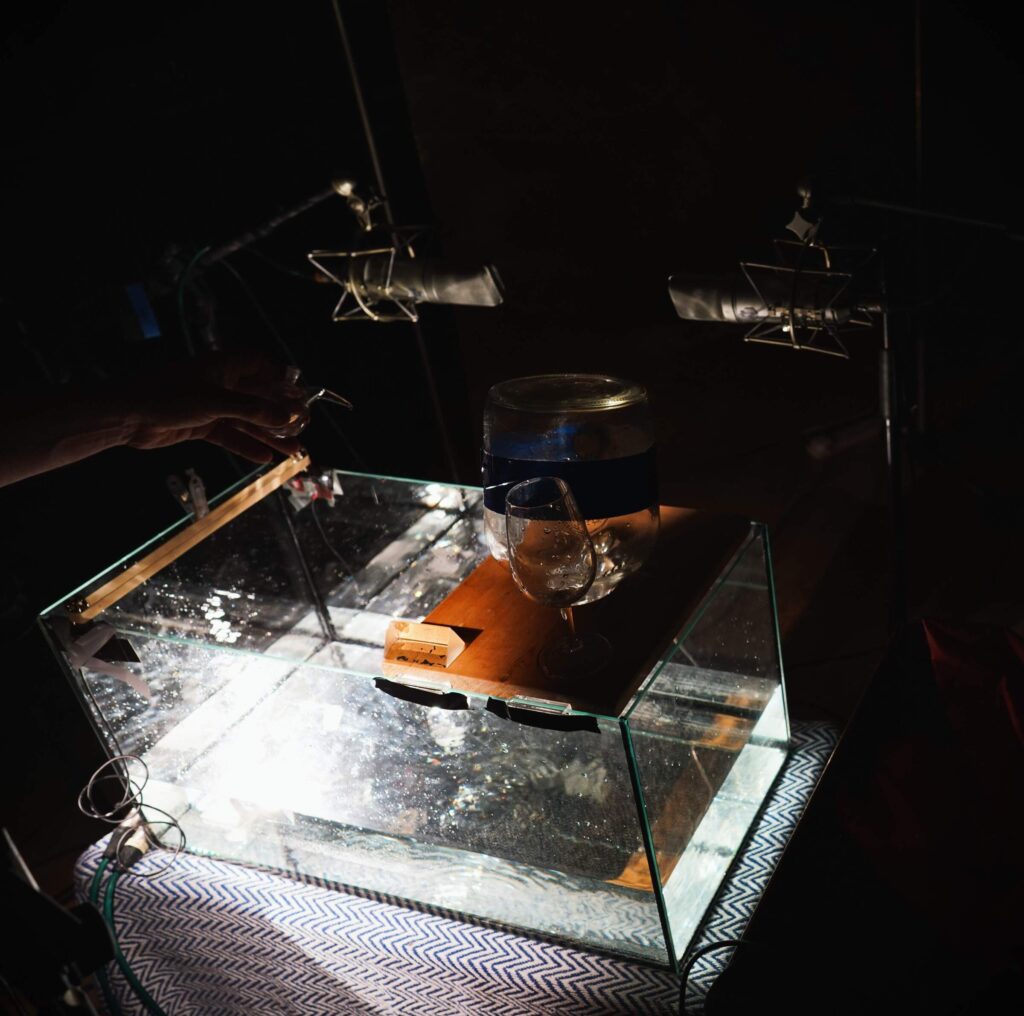
Siobhán Cleary’s ‘Scheherazade’ nods to Rimsky-Korsakov’s piece of the same name and explores the Trickster archetype. With the reverb creating a “world of echo,” how did you approach representing the Trickster musically and those sudden changes in tone?
Nathan: This rhapsody required every ounce of classical technique to perform. It is incredibly virtuosic for both players. Reducing an entire orchestra to two players demands the performers have a complex colour palette in their playing to live up to the vibrancy of the original piece. The trickster represents inhibitions, bursting to be released, often in humorous ways, which is also a reflection of Siobhán’s naturally humorous personality. When learning this piece, I imagined the story of Scheherazade being imagined by a surrealist. It has a hazy, dream-like quality until bold, dark tones add an almost ominous sound.
Nathan, your own piece, ‘Cauldron of Morning,’ tries to capture the ecstasy in Sylvia Plath’s poetry. You’ve mentioned how Nick Roth’s piece uses heavily distorted viola to mirror water. How did you use distortion and drone to channel Plath’s intensity and create that tumultuous, ritual-like frenzy?
Nathan: Sylvia Plath’s intense poetry is lonely, dark, and electrifying. The title is taken from Ariel, which is so intimate but hurdles forward like someone staring death in the face. I wanted to capture both that inward voice and the ecstatic energy as the poem unfolds. The use of multiple tambourines ends the piece and the record, much as it begins, in chaos: pure, primaeval emotion, no thought, just feeling. Even though both Nick’s piece and mine use similar distortion, it is applied to achieve very different effects. In ‘Sophia x Bythos,’ the distortion is used in a traditional way, loud and powerful, to represent God, but for most of the piece I play quite quietly with heavy distortion, which creates an eerie effect. In my piece, however, I went in the other direction, using the distortion to the maximum. I perform in a group with Garrett Sholdice where we incorporate lots of this sort of stuff. Luckily he agreed to play on this record to add an extra dimension and a deep layer. This allowed me to play quite melodically without losing that calm layer.
You didn’t use overdubs, and instead relied on microphones picking up tiny but crucial details. What’s the recording process like when you work that way, and how does it affect the depth and nuance of the final sound?
Nathan: What really struck me when recording this was how different the pieces are from the live version. In the performance, there is such a visual element. Every inch of the stage is covered in instruments, lights, mirrors, strobes, fog, and I even walk through the audience. However, with all of the creative placing of microphones in the studio, I heard parts of the pieces I never could hear live. It was incredible being able to pick up these minute details without worrying that the audience wouldn’t hear them. It took time to place the microphones, but it really helped capture the microcosmic life of each work.
Alex, your stage setup is described as a visual feast, with a huge array of analogue gear and stacked speakers. What are some of the more unusual or interesting percussion instruments you used on this album?
Alex Petcu: If you were to perform the entire album live, which we did last year at New Music Dublin, you’d completely fill a large enough stage with percussion instruments. I think we used all of my favourite sounds for these pieces and it was a joy to work with the composers in realizing their vision. A small selection of these includes:
Large sheets of metal 2 meters high
A prepared triangle, which involves suspending it by a metal wire at least 1.5 meters high, with a styrofoam ball to act as a resonator
Drums hung upside down with springs hanging from the drumheads
Throwing bunches of chains into a box
Various home-made metal plates, bars, and tuned pipes
Crystal bowls, tuned gongs, wawa, and thunder tubes
You’ve been a duo since 2018, commissioning many works for viola and percussion. What are the biggest challenges and rewards of writing and performing for that combination?
Nathan: I love playing in this duo, mainly because we never know what to expect. It’s not like playing in a string quartet, where the music might be different, but it’s always a string quartet sound. We have never had even two commissions that sound remotely alike. Every composer approaches this duo like it’s brand new. There isn’t a huge amount of reference for them, so it’s always fresh and imaginative. The main challenge, however, is stepping up to the demands of the composers. The sound of the duo is versatile, so we have to be adaptive and technically ready for anything that comes our way.
You’ve worked with many composers over the years, and for ‘Archetypes’ you commissioned four of the five pieces. What’s the process like when you collaborate with composers, and how much do you shape the music as it’s being written?
Nathan: Commissioning composers is like choosing a travel companion. You had better like them because you will be working with them for quite a while. We really consider who we commission because the music is going to be part of our lives for several years. When we receive scores, sometimes it requires months of individual preparation before we even meet to rehearse. Collaboration is integral to the commissioning process. If a composer is writing a piece for particular performers, they want to play to their strengths. In ‘Archetypes,’ I think we collaborated even more than usual. Nick, for instance, had a really strong idea about the sounds of water and the form of the piece, and I provided improvisations and effects. He works like a wizard, and certainly in the recording booth I relied a lot on his dramatic flailing arms. Some of the other composers were keen to do a deep dive into Alex’s extensive collection of instruments. We never impose, however. The composer has the artistic license and we are there to bring their ideas to life.
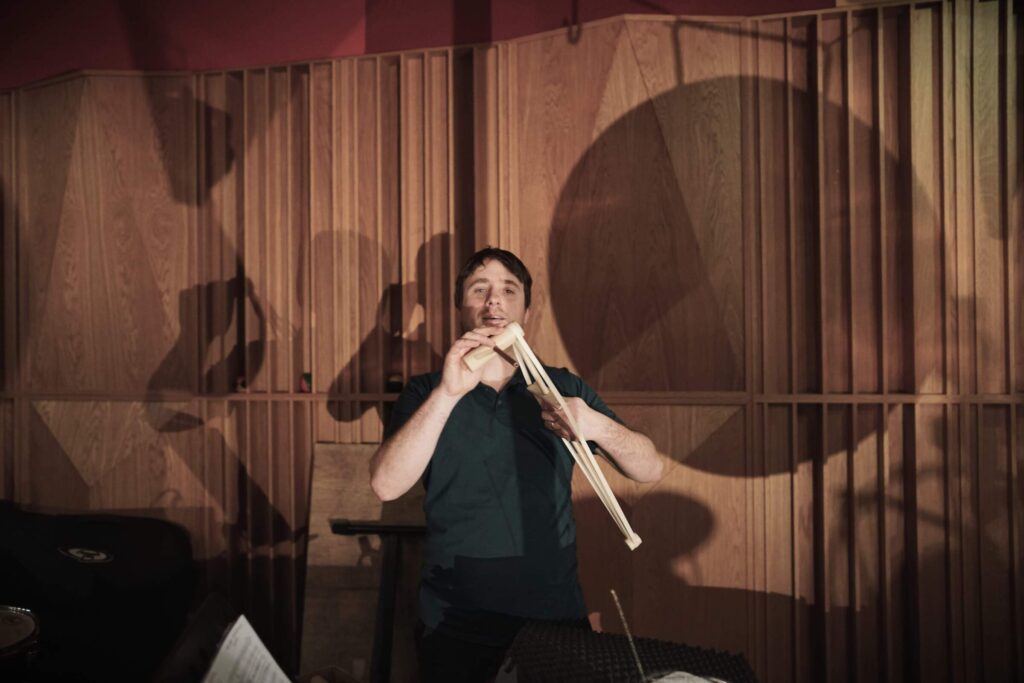
The album is described as a joyful blast to make and to listen to. For all its intellectual and thematic depth, it’s also meant to be experienced on a gut level. What do you hope listeners feel and take away from ‘Archetypes’ beyond its concepts?
I hope that listeners will listen closely. It’s a journey from start to finish, so just enjoy the ride.
Klemen Breznikar
Headline photo credit: (Credit: Diatribe Records)
Alex Petcu Website
Nathan Sherman Website
Diatribe Records Website / Instagram
